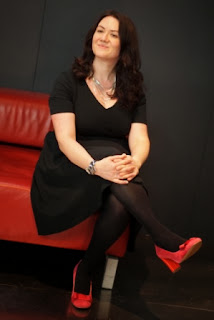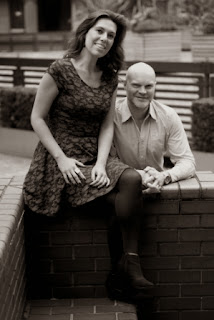* * *
Empty Pools: I first heard this band on my friend Juliet's brilliant radio show "Indie Wonderland". (The show normally goes out live on Thursday evenings, 7-9pm, on ARfm - with the archive of old programmes here on Mixcloud.) Jules is great at pushing her listeners' Britpop and Peel nostalgia buttons, without neglecting new underground music or treating her remit with too much respect, ranging into anything alternative or unusual that takes her fancy. I love Empty Pools in particular because their songs are a bit thorny - math-rock without any of the alienation - and repay close attention. 'Exploded View' is the first single from the debut album 'Saturn Reruns' and is full of these moments. Like the way the vocals seem to take a few lines to lock into the rhythm...or when the main jagged riff starts at around 0:55, there's another guitar just gliding along undisturbed... or the moment of genius at 2:19 when the distorted accompaniment suddenly cleans up. Ace.
Dengue Fever: a US band who formed to play the style of music they loved - and who doesn't love psychedelic 60s Cambodian rock? - and recruited a fabulous Cambodian singer, Chhom Nimol, so they could do it properly. This is the title track from their new EP, but all three songs on it are gorgeous - nightmare choosing which one to include.
I've had a bit of a proggy 2013. Golden Void, following a lovely debut album last year, released a double A-side single for Record Store Day 2013, containing 'Rise to the Out Of Reach' and 'Smiling Raven'. No accident they went well together, it turns out, as here they perform the two tracks stitched into a medley. Below that, I've included the song 'Empty Vessels' by Wolf People, another group prone to what you might call guitar 'exploration' and bewildered-sounding vocals. I unashamedly adore all this stuff - I play it and in my head, I'm once again the bemused and delighted kid listening to the 'War of the Worlds' concept album or trying out Peter Gabriel-era Genesis. *puts on hat shaped like a pot plant*
Chvrches: Let me confess, their name really gives me the willies. Apparently, they changed the spelling so that it would stand out more, be easier to Google, etc etc. Well, it isn't bloody easier when one keeps typing 'churches' like a NORMAL PERSON, is it? *resumes regular breathing...* The sound they make gives me goosebumps, though - for synth-pop, it's a real assault on the senses, with a real squelch and rumble to the production - like in 'Lies', here, at 0:57 when the chorus fills out and those clattering claps come in. Thrilling.
2013 has also been the year when I found my 'opera feet' - literally, as my friend David and I stood throughout the entire Ring Cycle at the Proms this summer. (Well, apart from David's Pimms-induced 'emotional moment' during "Die Walkure", when a bit of sitting down was required.) I've spent a lot of the months since reading and listening more widely to as much opera as possible, but there is something about this - Solti conducting the funeral march from "Gotterdammerung" during the first Ring studio recording - that overwhelms me every time, even though there is no staging and, at this point, no voices. The music is elemental but Solti communicates something extra with his energy and expressiveness. I'm routinely in bits by the fanfare at 2:56.
The great new work by George Benjamin, 'Written on Skin', premiered in spring before I got my opera act together, but finding out more about it since has led me to other performances by one of its stars, soprano Barbara Hannigan. Hannigan is famous for a kind of fearless glamour and sensuality - no bad thing - but is also a restless champion and programmer of contemporary classical music. For all that, this clip of her conducting and singing Mozart is one of my favourite videos of the year - the rapport with the orchestra shines through, and the bravura nature of her talent is evident from the opening seconds, where she sets the tempo, then wheels round to face the audience and start the first aria. Inspiring!
For regular readers of this blog (thank you, darlings, thank you), the following acts will not really need an introduction. I've written about them all before, and will no doubt do so again - they are brilliant people as well as captivating musicians, the kind of artists whose work I simply want to press into the hands of friends and strangers. Whatever arbitrary radar is out there, they're operating beneath it to some extent, but they communicate enough joy and wonder to inspire devotion in any audience. Here, I've tried to provide slightly alternative versions/songs, alongside links to the blog entries where I covered them in more detail.
The studio version of this Bitter Ruin single is a hypnotic, mantra-driven spell of a song. In this delicate acoustic version, the beauty of the melody and intricacy of the guitar-playing move to the forefront. More on BR here.
Matt Howden - who performs and records as Sieben - has a new album on the point of release, and I'm going to write more about it early in the new year. This is a scintillating live rendition of one of the new songs, which Matt has been performing for a while. The video is full of great things: starting to strum the violin; putting the fiddle and bow down to sing the first verse; the eerie rhythm after the gorgeous first solo; 'brushing' the side of the violin - and that's all before the halfway mark and the bow-whirling....!
I've posted this track by Jo Quail before, but not this particular video. I never tire of this beautiful adrenaline-rush of a tune, and this version was performed in St Leonard's Church (not 'Chvrch', by the way) where she shared a bill with Bitter Ruin at a great concert a few months back. This gives you an idea of how powerful her sound and stage presence are in such a setting - the 'dance' to press the right pedals from 1:50; creating new layers at the two-minute mark to the flourishes with the bow at about 2.35, onto the astonishing downward run of notes at 2:55... and each time you think it can't build any further, it does.
The Disappointment Choir featured in my last blog entry here, and this is a lovely track from the newly-released album "Polar Ships". It shows everything that's great about them - harmonies from voices that seem to blend almost by accident, melancholy underpinned by propulsion, electronica jostling with acoustic guitar. At this rate, they'll give ballads a good name.
Another late-year surprise from a dark folk singer, Jordan Reyne, I first heard supporting Rome and Jo Quail in autumn. I'm sure any fan of those artists ... or, say, Dead Can Dance ... will love this. Certainly the most pagan Christmas record I've heard, and one of the best. (PS The video has strobe effects, so watch yourself..!)
I'm aware that that's quite a sombre finish and I've managed to include what are essentially two pieces of funeral music in my best of the year's listening. See, it's not all 'Ho Ho Ho'! With that in mind, then, it's a good moment to lay 2013 to rest. Happy new year to you, and my best wishes for 2014.


































